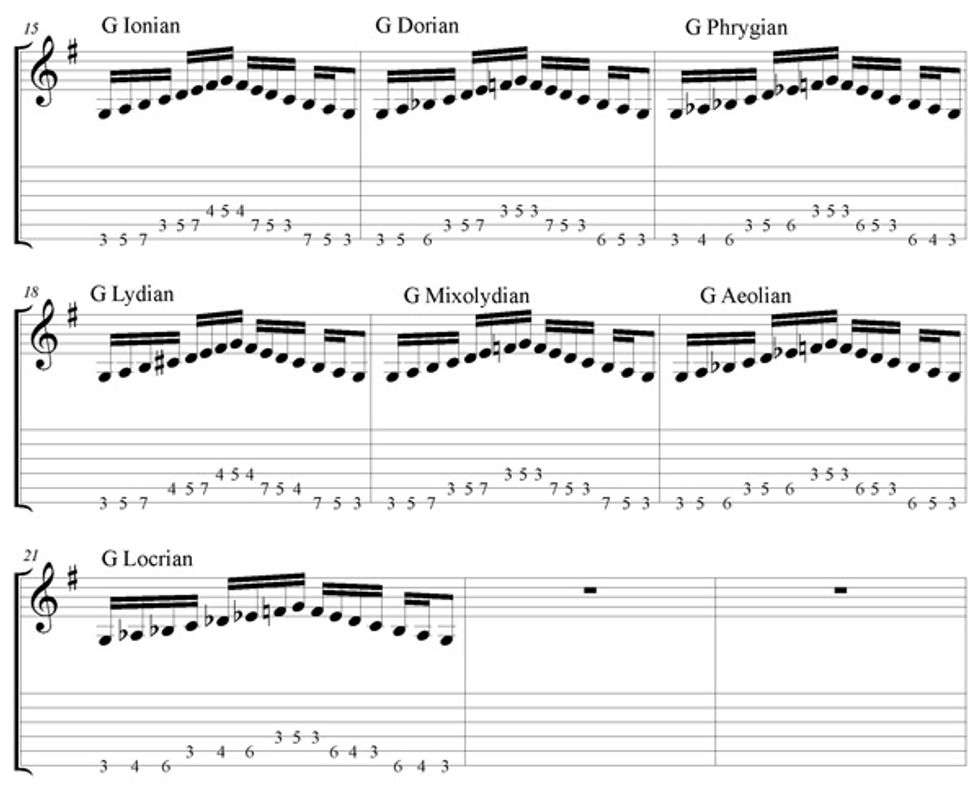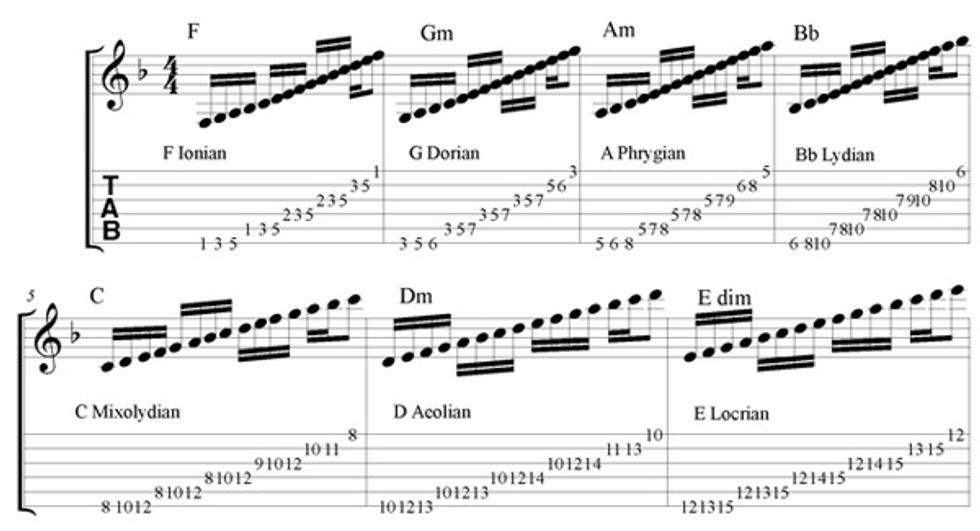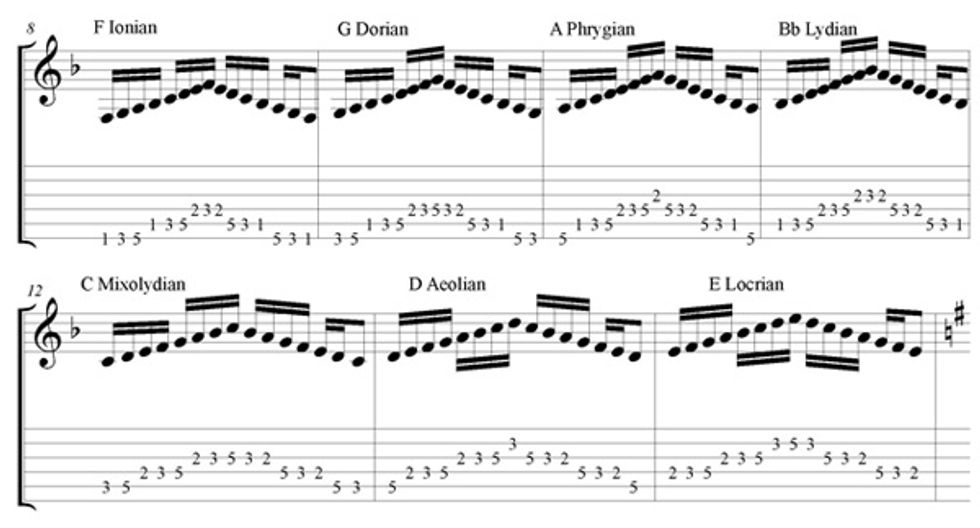Welcome! We are going to talk about the modes in this lesson, and I hope to clear up some confusion you might have about them. I have been a instructor for many years and have been teaching the modes for a long time. Many guitarists make a effort to use them, and I use them in my music too. So for the first part of this lesson I will explain what the modes are, their names and how they are built. Next lesson we will focus more on putting them to use. You will want to memorize all of this lesson's information to be able to use the modes properly next lesson and beyond.
What Are The Modes?
"Modes" is another name for scales formed from the major scale (Parent scale). You can form a mode by playing a major scale and starting from different notes in the scale. For example, say we begin with a C major scale (C, D, E, F, G, A, B), C is our root. If we play the same notes from D to D and make D the root, it becomes a D Dorian scale. Still using the same notes, if we start with the 3rd note, E, then we will have a E Phrygian scale.
In Example 1 you will see seven different modes in order, created from the major scale off the 6th string. These are in F major (F, G, A, Bb, C, D, E ). The patterns are the same in all keys, but I chose F because it uses the full range of the fretboard. Seeing all the modes derived from one parent scale is called derivative. Make sure you memorize the names and their order.
You should play these scales in different positions. I put the chords above each scale so you know which chord relates to each mode. So for example, learn that Mixolydian is built from the 5th step of a major scale and the mode comes from the chord C7 if you are in F. Make sure you know all the modes in this fashion. Also, be aware of the notes you are playing and memorize each shape so you can move it around to different keys.
Example 1: (download audio example)
You should practice the modes in one position. Example 2 is the modes in one position in F; be sure to do this everywhere on the neck.
Example 2: (download audio example)
Keep working through the examples and explanation before moving on.
The Parallel approach
It's very important to learn the modes in parallel, which means comparing them with one another beginning on the same root note. So G Ionian is compared to G Dorian, G Phrygian, etc. Memorize the interval structure for all seven modes. Have these down cold and build these scales off all roots. If you look at Example 3 you will see all the modes in G, one octave each in the parallel approach. Don't forget to be aware of the notes in each scale as you play them, you can play these in any position. You will notice each mode has its own unique flavor. Each scale has its own whole step (W) and half step (H) construction, be sure to memorize this. If you are not sure what a whole step is, it is a two-fret distance on the guitar, and a half step is one fret apart.
| Ionian | 1, 2, 3, 4, 5, 6, 7 | WWHWWWH | Major |
| Dorian | 1, 2, b3, 4, 5, 6, b7 | WHWWWHW | Minor |
| Phrygian | 1, b2, b3, 4, 5, b6, b7 | HWWWHWW | Minor |
| Lydian | 1, 2, 3, #4, 5, 6, 7 | WWWHWWH | Major |
| Mixolydian | 1, 2, 3, 4, 5, 6, b7 | WWHWWHW | Major |
| Aeolian | 1, 2, b3, 4, 5, b6, b7 | WHWWHWW | Minor |
| Locrian | 1, b2, b3, 4, b5, b6, b7 | HWWHWWW | Diminished |
Example 3: (download audio example)

That's it for now! Work with these modes, memorize the order and the intervals and you will begin to see how useful they are, and how different each one sounds. Next lesson we will focus more on how to apply them. Don't forget to visit mikecampese.com!









![Rig Rundown: Russian Circles’ Mike Sullivan [2025]](https://www.premierguitar.com/media-library/youtube.jpg?id=62303631&width=1245&height=700&quality=70&coordinates=0%2C0%2C0%2C0)









